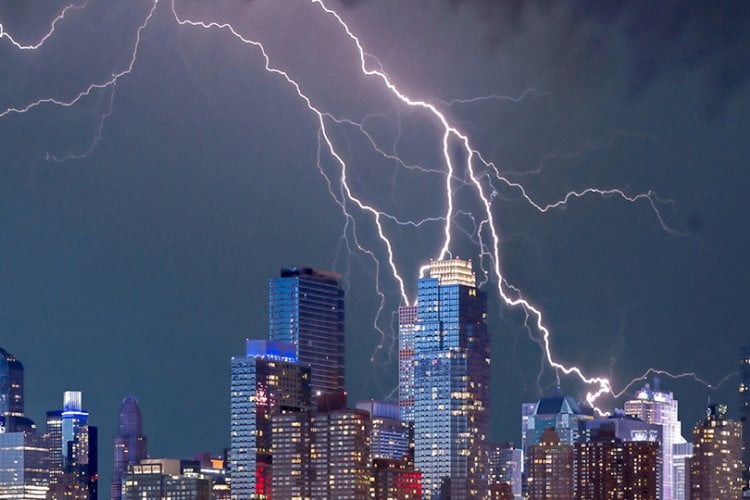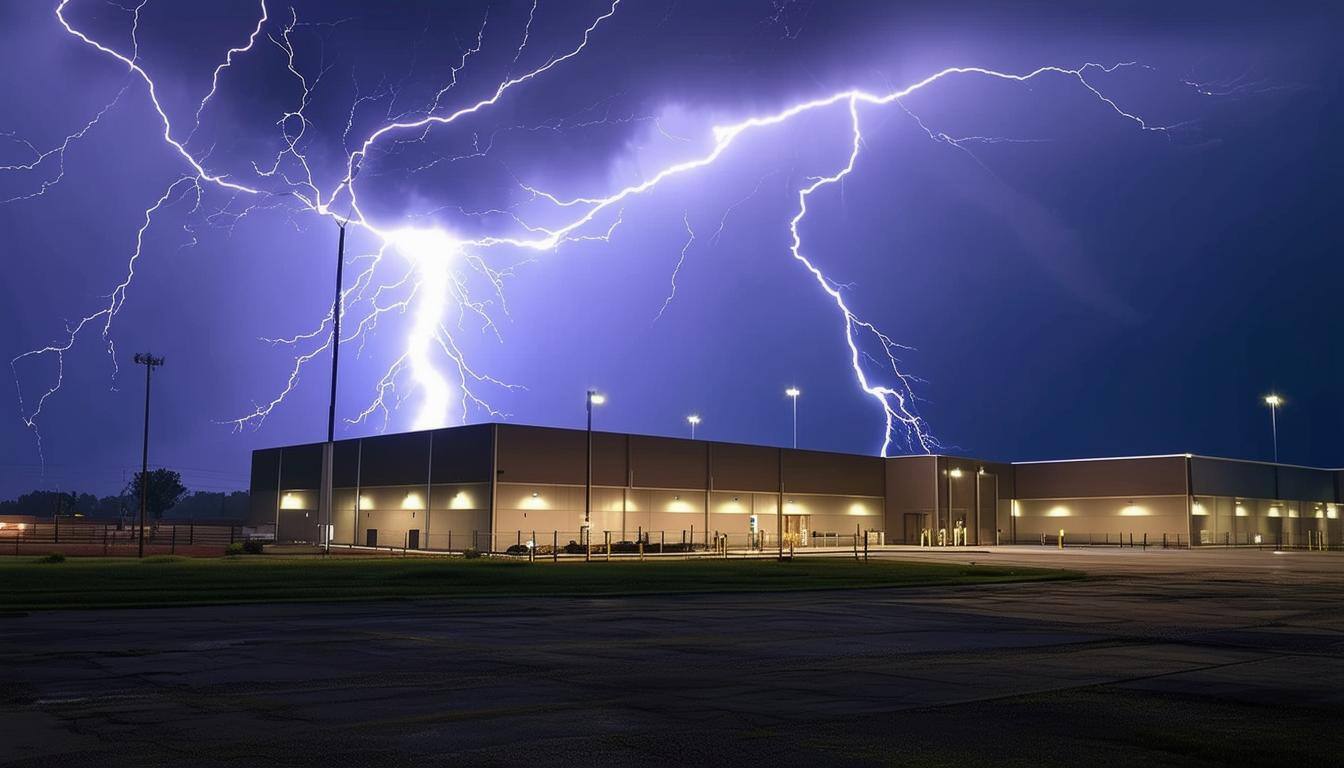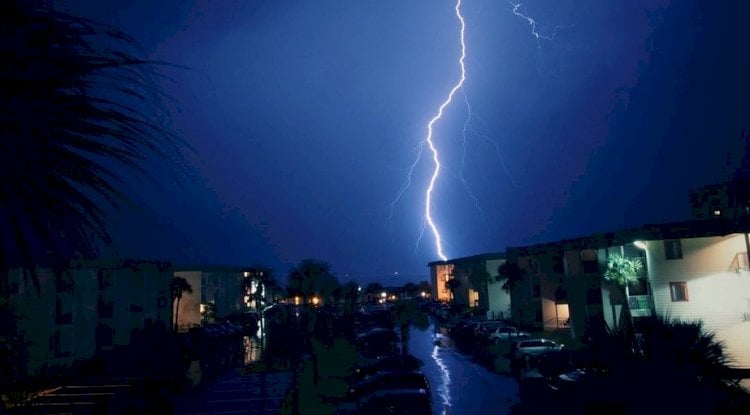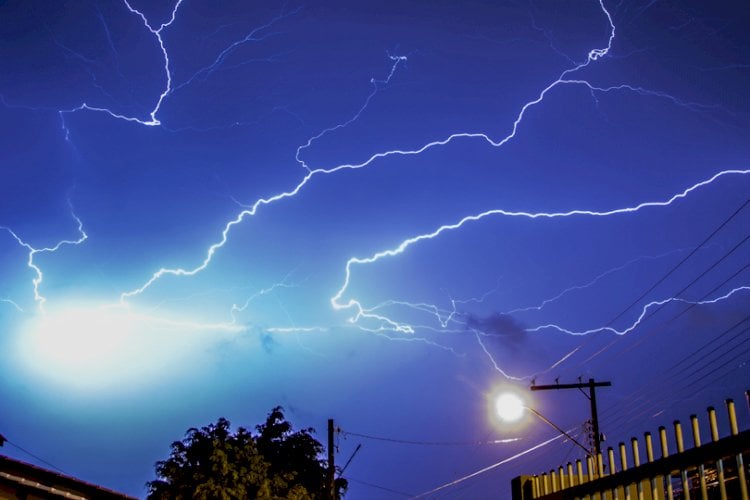Phase 1 – Conduct a Lighting Risk Assessment with a Rolling Sphere Analysis
A Lighting Risk Assessment looks at a variety of factors involving the building, including the value of the property inside the structure, the number of people in the structure and how often they are in it (24/7 versus 40 hours a week), electrical systems, sensitivity of equipment, proximity to flammable objects (forests, brush, etc.), and much more. An unmanned warehouse storing metal pipes simply does not need the same level of protection that a facility filled with technical test equipment needs.
The Lighting Risk Assessment will provide a recommended protection level of I through IV specifically for the building, with level I being the most stringent and the most costly to install. The Lighting Risk Assessment will additionally provide the types of Surge Protection Devices that are needed specifically for the structure. The Lighting Risk Assessment will also tell us if more advanced Lightning Strike studies are required such as Frequency Spectrum and Time Domain studies.
Phase 2 – Lightning Protection System Design
Once the Lighting Risk Assessment tells us what level of protection is needed, the physical design can begin. The number of aerials and down conductors can then be determined and construction drawings are issued.
Phase 3 – Construction
Once the Lightning Protection System design is completed the physical construction can begin.
The Need for Unbiased Lightning Protection System Assessments
As you know, lighting protection companies will typically handle all three (3) of the above phases. The problem for many of our clients is that the lightning protection company is financially motivated to sell them the highest level of protection that they can which can be very expensive. This is why smart clients ask us (who have no products to sell) to conduct an independent Lighting Risk Assessment and Lightning Protection System design. This way the client can contract a lightning protection company to design and install a Lightning Protection System without fear of being up-sold along the way. If you only need Level-III protection why pay to install a Level-I Lightning Protection System?
Who Does What?
In regards to system design and construction, it is common to allow the lighting protection company to design and install your system as it places the responsibility on a single entity; although the client can also source the design from us as well. Some lightning protection companies only do lightning protection system design and sell materials – they don’t install the system. So you could potentially have three separate companies involved in the final lightning protection system. It’s really up to the client on how they want to handle their project.
If we do the Lightning Risk Assessment and another company is doing the design and installation, your client won’t have a scenario where the fox is watching the henhouse. Once the Lightning Protection System is installed we can conduct a final commissioning to ensure that the Lightning Protection System has been constructed properly.
We are happy to help you with your project. Some of the services we can provide are:
- A Lightning Risk Assessment Only – No need for us to visit the site, we can gather all of the required information via electronic means and phone calls. This will provide you with a recommended protection level (LPS I through IV) and types of surge protection needed for your incoming services (electrical, telco, etc.).
- A Lightning Risk Assessment, eyeball survey and soil resistivity data – For this option we would go to the site and conduct an eyeball survey of the facility with minimal testing (clamp-on ground meter testing only). We would review the contents of the Lightning Risk Assessment as we understand it, look at the existing grounding systems and make recommendations for improvements (ground ring for the Lightning Protection System and possible 5-ohm clean ground source for the sensitive equipment). We would want to look inside some of their electrical panels and conduct an electrical one-line review. The soil resistivity test would be conducted outside of the building and would give us the raw data needed to design a 5-ohm ground. Also an understanding of how the power is distributed throughout the building will be important for the Lightning Risk Assessment and ground design.
- Lightning Risk Assessment and Full Grounding Survey – This would be the same as #2 above but it would also include measurements of the existing grounding systems within the facility.




